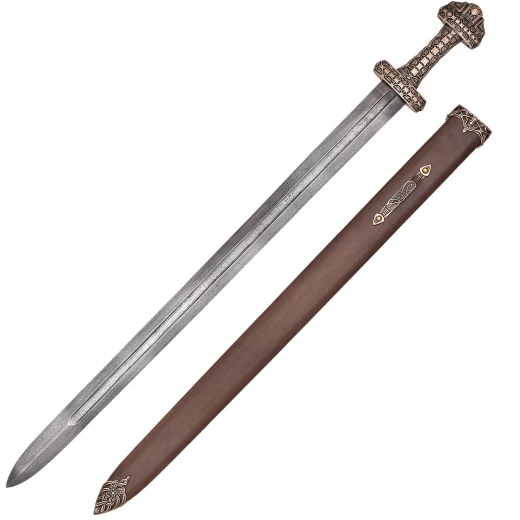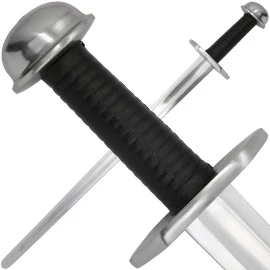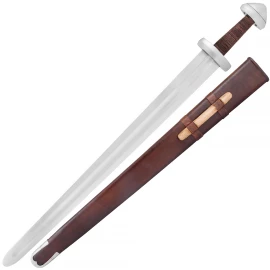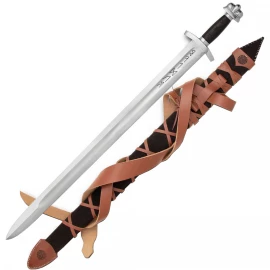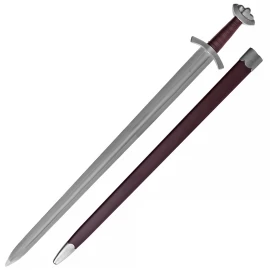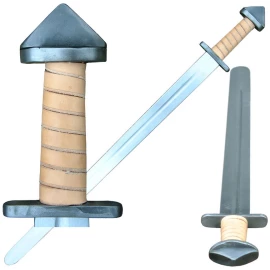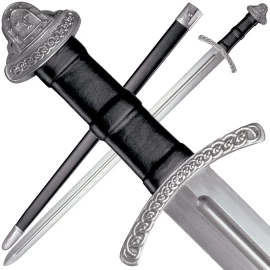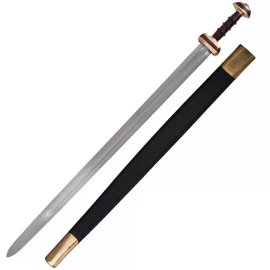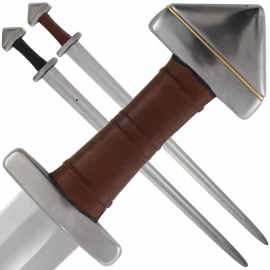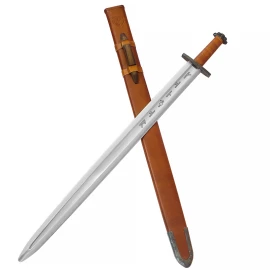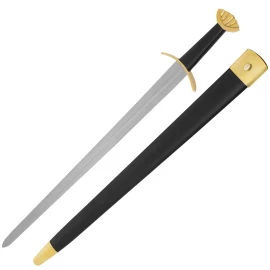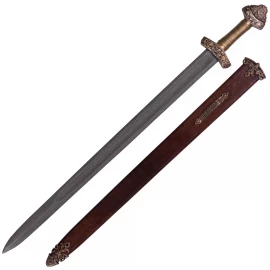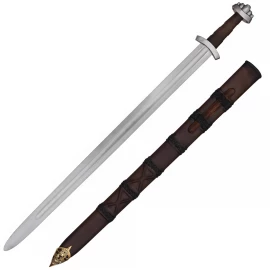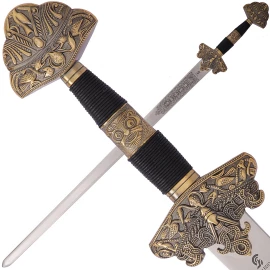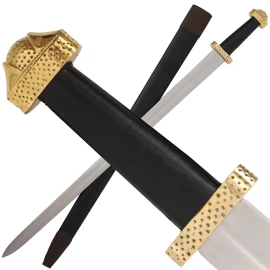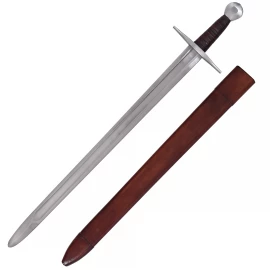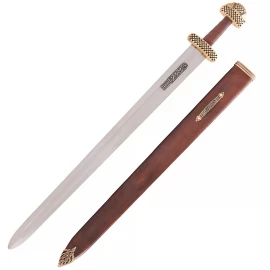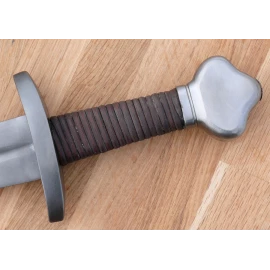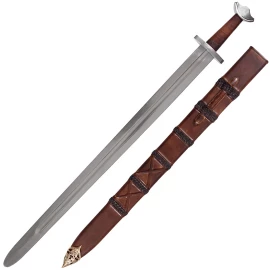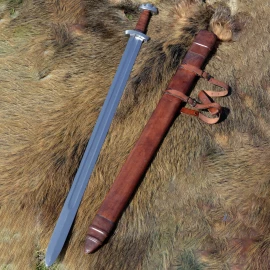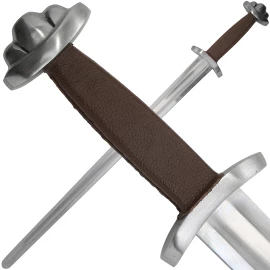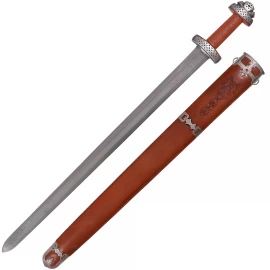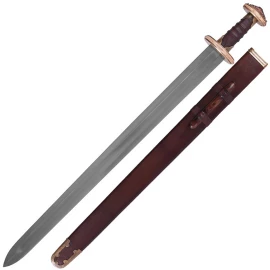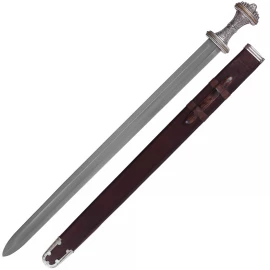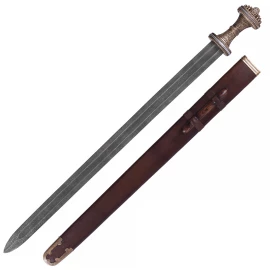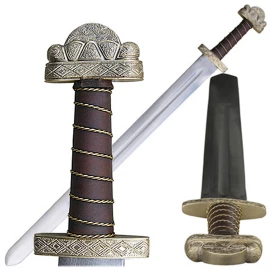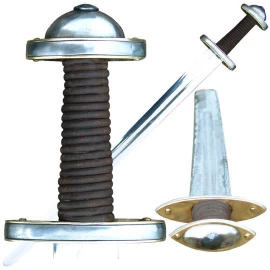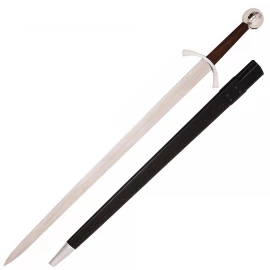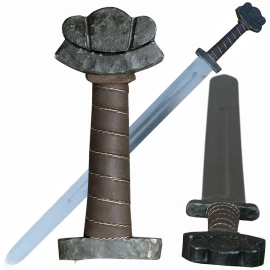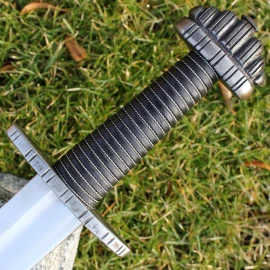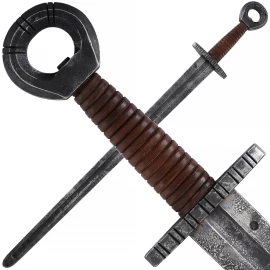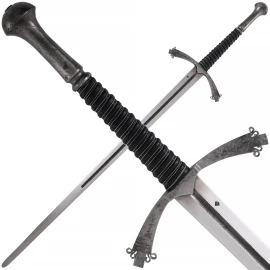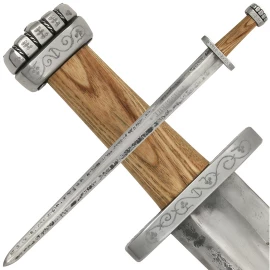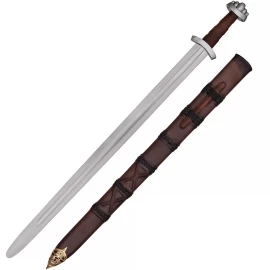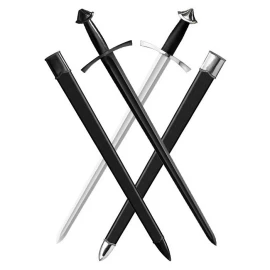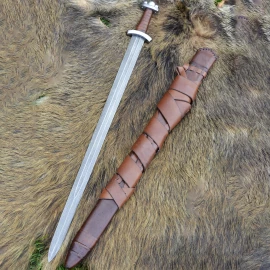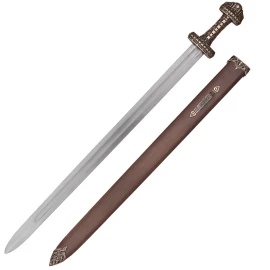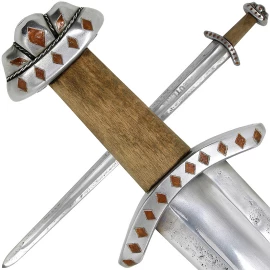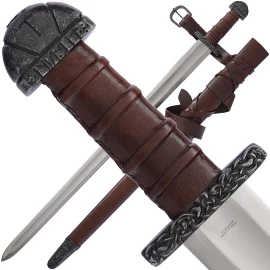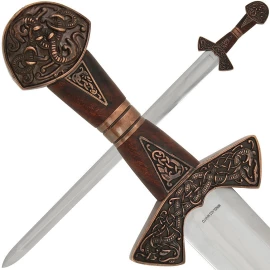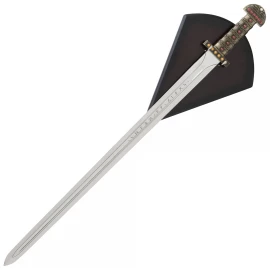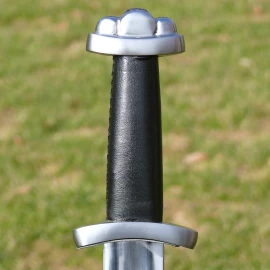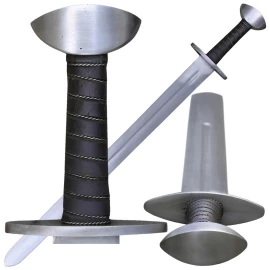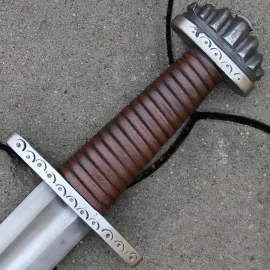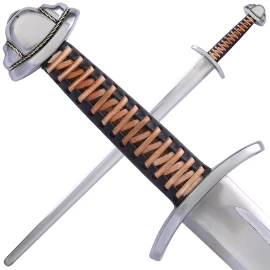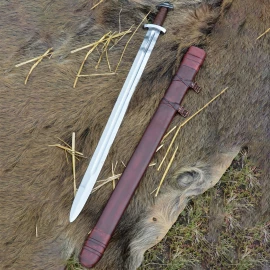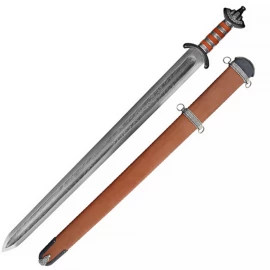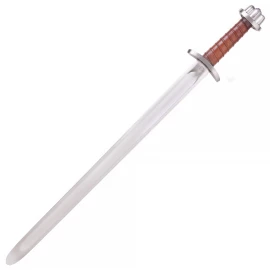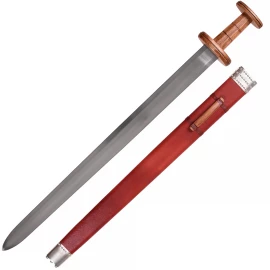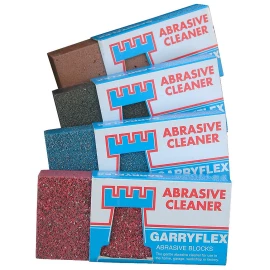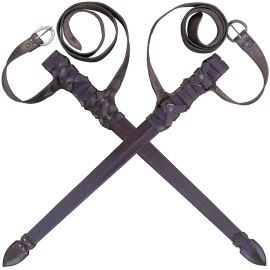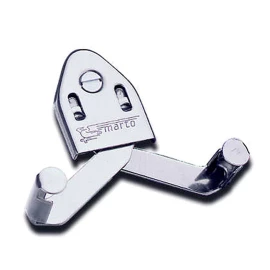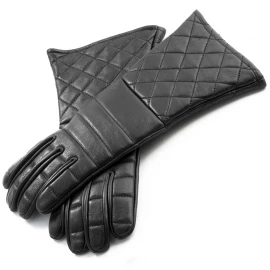Viking Sword Eigg, damask steel
This Viking sword is a replica of a sword from the year 800-900 which was found in a museum at the isle of Eigg. It features a blunt, slim high carbon steel blade with a wide fuller. The short guard, grip and pommel are made of cast bronze and richly decorated. The scabbard is made of leather-wrapped wood and features a bronze chape and mouth as well as a belt loop made of bronze (max. belt width 5cm). More information...
Notify me when the item is in stock.
We will inform you as soon as we stock up.
Viking Sword Eigg, damask steel
This sword is available with a blade made of Carbon or Damascus steel.
- Blade material: High carbon steel
- Overall length: approx. 97.5cm
- Blade length: approx. 80cm
- Handle length: approx. 17.5cm
- Weight: approx. 1833 g (carbon steel) and approx. 1920 g (Damascus steel)
- Blade hardness approx. 48 HRC
- Specs may slightly vary from piece to piece.
Dmascus steel
The terms Damascus steel or pattern welded designate compound steel forged out of two or more different types of steel. It is named after its birthplace, the Syrian city of Damascus, a former stronghold of the patterned steel production.
As a common practice, a harder high carbon steel and a milder low carbon steel are repeatedly forge welded and folded together. The high carbon steel ensures a higher hardness, a better temperability and longer lasting edge retention, whereas the milder steel confers greater blade flexibility and tensile strength. This procedure, which arose in a time where steel qualities were often low and inconsistent, enables to combine the positive attributes of the various steel grades.
Besides, the different shadings generated by the varying carbon content of the alternating layers engender strikingly beautiful patterns, such as the twisted motif called Torsion Damascus pattern or the Rose Damascus pattern. Undoubtedly, these unusual patterns partly explain why inherent magical properties were attributed to the Damascus steel blades of the Middle Ages.
We are here for you


